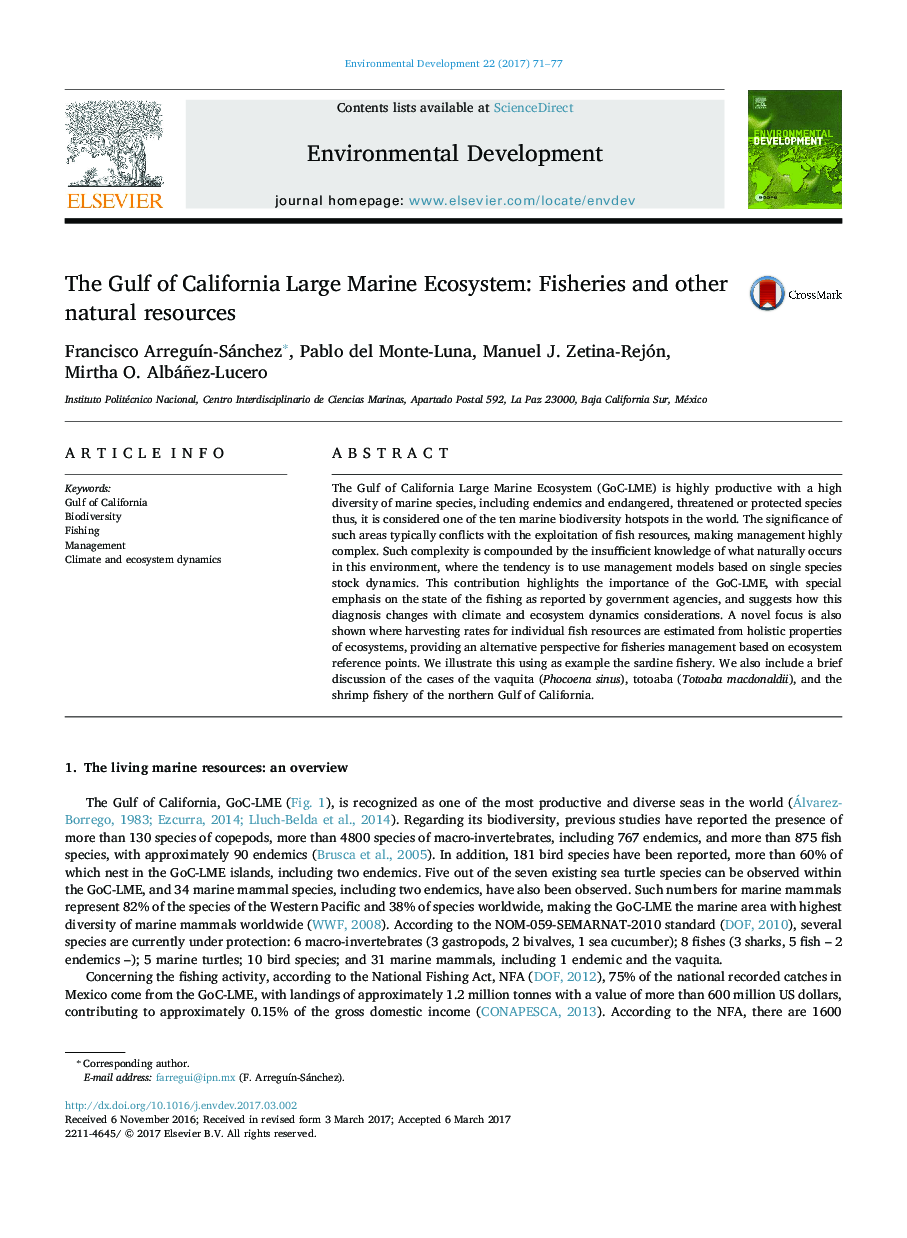| Article ID | Journal | Published Year | Pages | File Type |
|---|---|---|---|---|
| 5744128 | Environmental Development | 2017 | 7 Pages |
The Gulf of California Large Marine Ecosystem (GoC-LME) is highly productive with a high diversity of marine species, including endemics and endangered, threatened or protected species thus, it is considered one of the ten marine biodiversity hotspots in the world. The significance of such areas typically conflicts with the exploitation of fish resources, making management highly complex. Such complexity is compounded by the insufficient knowledge of what naturally occurs in this environment, where the tendency is to use management models based on single species stock dynamics. This contribution highlights the importance of the GoC-LME, with special emphasis on the state of the fishing as reported by government agencies, and suggests how this diagnosis changes with climate and ecosystem dynamics considerations. A novel focus is also shown where harvesting rates for individual fish resources are estimated from holistic properties of ecosystems, providing an alternative perspective for fisheries management based on ecosystem reference points. We illustrate this using as example the sardine fishery. We also include a brief discussion of the cases of the vaquita (Phocoena sinus), totoaba (Totoaba macdonaldii), and the shrimp fishery of the northern Gulf of California.
